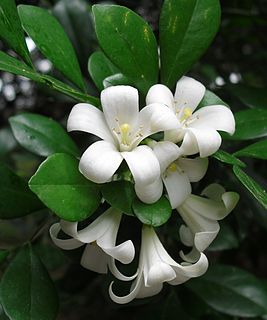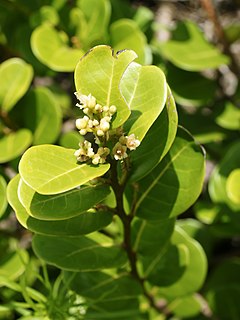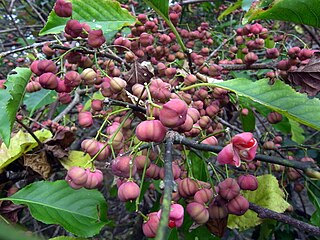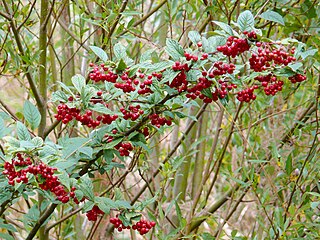
Morus, a genus of flowering plants in the family Moraceae, consists of diverse species of deciduous trees commonly known as mulberries, growing wild and under cultivation in many temperate world regions. Generally, the plant has three main species ostensibly named for the fruit color of the best-known cultivar: white, red, and black mulberry, with numerous cultivars, but more than 200 species are identified in taxonomy. The name “white mulberry” came about because the first specimens named by European taxonomists were a cultivated mutation prized for their white fruit, but wild trees bear black fruit like other mulberries. White mulberry is native to South Asia, but is widely distributed across Europe, Southern Africa, South America, and North America. It is regarded as an invasive species in Brazil and the United States.

Hornbeams are hardwood trees in the flowering plant genus Carpinus in the birch family Betulaceae. The 30–40 species occur across much of the temperate regions of the Northern Hemisphere.

Schisandra, the magnolia vine, is a genus of twining shrubs that generally climb on other vegetation. Various authors have included the plants in the Illiciaceae

Camellia sinensis is a species of evergreen shrubs or small trees in the flowering plant family Theaceae whose leaves and leaf buds are used to produce tea. Common names include "tea plant", "tea shrub", and "tea tree".

Murraya is a genus of flowering plants in the citrus family, Rutaceae. It is distributed in Asia, Australia, and the Pacific Islands. The center of diversity is in southern China and Southeast Asia.

Annona squamosa is a small, well-branched tree or shrub from the family Annonaceae that bears edible fruits called sugar-apples or sweetsops. It tolerates a tropical lowland climate better than its relatives Annona reticulata and Annona cherimola helping make it the most widely cultivated of these species. Annona squamosa is a small, semi-(or late) deciduous, much branched shrub or small tree 3 metres (9.8 ft) to 8 metres (26 ft) tall similar to soursop.

Myrica rubra, also called yangmei, yamamomo, Chinese bayberry, Japanese bayberry, red bayberry, yumberry, waxberry, or Chinese strawberry is a subtropical tree grown for its fruit.

Osmanthus is a genus of about 30 species of flowering plants in the family Oleaceae. Most of the species are native to eastern Asia with a few species from the Caucasus, New Caledonia and Sumatra.

The Taiwan yuhina, also known as Formosan yuhina, is a small songbird endemic to the island of Taiwan.

Chrysobalanus icaco, the cocoplum, paradise plum, abajeru or icaco, is found near sea beaches and inland throughout tropical Africa, tropical Americas and the Caribbean, and in southern Florida and the Bahamas. It is also found as an exotic species on other tropical islands, where it has become a problematic invasive. Although taxonomists disagree on whether Chrysobalanus icaco has multiple subspecies or varieties, it is recognized as having two ecotypes, described as an inland, much less salt-tolerant, and more upright C. icaco var. pellocarpus and a coastal C. icaco var. icaco. Both the ripe fruit of C. icaco, and the seed inside the ridged shell it contains, are considered edible.

Yunnanosaurus is an extinct genus of sauropodomorph dinosaur that lived approximately 201 to 168 million years ago in what is now the Yunnan Province, in China, for which it was named. Yunnanosaurus was a large sized, moderately-built, ground-dwelling, quadrupedal herbivore, that could also walk bipedally, and ranged in size from 7 meters (23 feet) long and 2 m (6.5 ft) high to 4 m (13 ft) high in the largest species.

Genista germanica, the German greenweed, is a plant species in the genus Genista belonging to the family Fabaceae.

Zanthoxylum armatum, also commonly called winged prickly ash in English, is a species of plant in the family Rutaceae. It is an aromatic, deciduous, spiny shrub growing to 3.5 meters in height, endemic from Pakistan across to Southeast Asia and up to Korea and Japan. It is a source of the spice Sichuan pepper, and also used in folk medicine, essential oil production and as an ornamental garden plant

Clausena is a genus of flowering plants in the citrus family, Rutaceae. It was first defined by the Dutch botanist Nicolaas Laurens Burman in 1768. It is distributed in Africa, southern Asia, Australia, and the Pacific Islands.

Euonymus hamiltonianus, known by the common names Hamilton's spindletree and Himalayan spindle, is a species of flowering plant in the family Celastraceae. It is native to Asia, where it is distributed in Afghanistan, Russia, China, Japan, Korea, India, Nepal, Pakistan, and Burma. This is one of the most common Euonymus species. It is cultivated in gardens and landscapes in other parts of the world.

Coriaria nepalensis is a shrub of the genus Coriaria. It grows in the foot hills of Himalayas. It blooms in spring and has bright yellow flowers and red fruits in summer.
Iris dolichosiphon is a plant species in the genus Iris, it is also in the subgenus Iris and in the section Pseudoregelia. It is a rhizomatous perennial, from China and Bhutan. It has long, thin dark green leaves, very short stem, and dark blue, purple, or violet flowers. That are mottled with white. It has thick white/orange beards. It has one subspecies, Iris dolichosiphon subsp. orientalis, from China, India and Burma. It has similar flowers. They are cultivated as ornamental plants in temperate regions

Cotoneaster bullatus, the hollyberry cotoneaster, is a species of shrub in the genus Cotoneaster within the rose family. Its natural range is in Western China, where it is found in a range of woodland and shrub biotopes from 900 to 3200 m above sea level.
Daphne papyracea is a shrub, of the family Thymelaeaceae. It is evergreen, and is found across Asia, from Pakistan through central Nepal to China. Generally it is found at elevations from 700 to 3,100 metres. Daphne laciniata from Yunnan has been treated as a separate species or as part of D. papyracea.

Camellia cuspidata, also known by the common name cuspidate camellia, is a species in the genus Camellia, in the family Theaceae. It is native to China, specifically the west. It occurs in the provinces of Anhui, Fujian, Guangdong, Guangxi, Guizhou, Hubei, Hunan, Jiangxi, Shaanxi, Sichuan, Yunnan, Zhejiang.






















